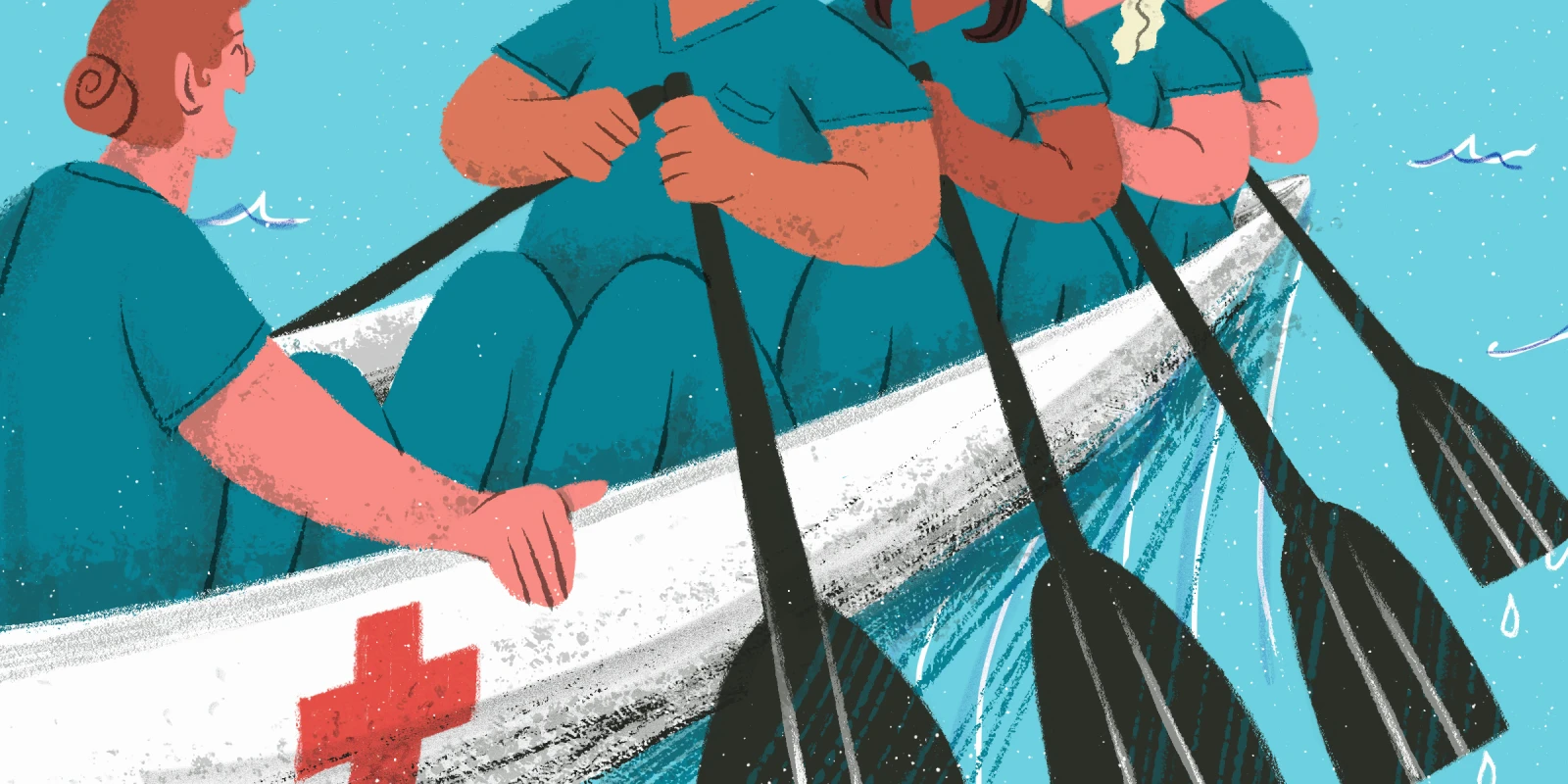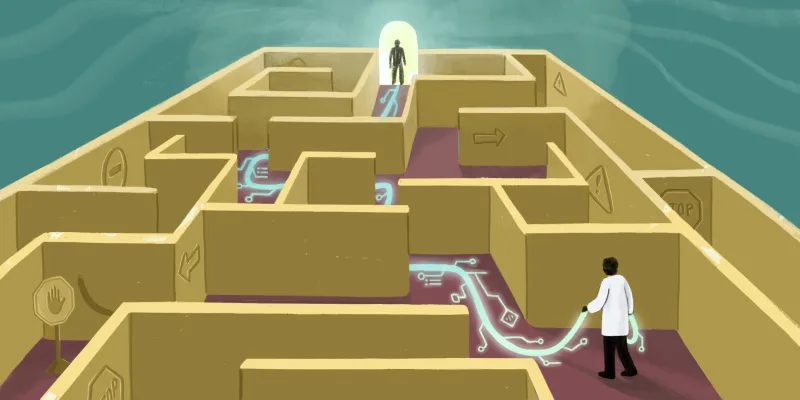I was prepping for morning rounds in the PICU when things started to go south before we even started. I took an admission call for a 3-year-old who had been found floating face down in a pool but was resuscitated prior to arrival at the hospital. The ER team had expedited her admission, CT scans were completed, and they were on the way up to the unit. On arrival to the PICU she started having seizures, but because she was fast-tracked through the ER, she didn’t have any IV access or labs. CT scans were not yet interpreted, either. Nurses were busy elsewhere in the unit with another decompensating patient, so there was little help and veins were difficult to find. At the same time, we couldn’t find or contact either of the two attendings on that day.
The first medication was administered in the muscle and the seizure temporarily stopped. The child’s respiratory effort also stopped. Without venous access and now bagging the patient, we hit the staff assist button, but only a few extra hands were able to respond. At that moment, a code went off elsewhere in the hospital and my backup physician and nurses ran past the doorway. In my mind, all I could think was, “What is happening here?” We were in a crisis but missing the usual resources. Although we had the knowledge, we lacked enough hands to fill all the roles. Meanwhile, delays were stacking up, and I felt the post-call fatigue.
In the medical field, especially the ER and ICU, crises are common. A well-oiled machine like an inner-city trauma bay is a wonder to behold; efficient and coordinated with a clear leader and well-defined team roles. The same goes for a cardiac arrest in an ICU. Roles are assumed quickly with people, medications, compressors, and airway supplies appearing immediately. When these systems are designed and well-built, they feel seamless and patient care is improved. When a piece of the system is missing or has gone unaddressed, it affects the rest of the system.
Over the years and through many different crises, I have amassed skills for managing a multitude of situations. Only recently have I been able to find terminology for those skills: Crisis Resource Management (CRM) — which is strange because my spouse is a pilot and has been well-ensconced in Crew Resource Management for the 20-odd years we have known each other. In aviation, CRM grew out of an infamous plane crash in the Everglades in 1972. As the plane made its landing approach, a light to indicate the landing gear was down had not lit. The pilots became so focused on figuring out what was wrong with the landing gear that they didn’t notice autopilot had disengaged and they were gradually descending until a few seconds prior to the crash. Upon investigation, it was discovered there was nothing wrong with the landing gear, rather a burnt-out light bulb was the culprit.
Slowly, CRM has crossed over into medicine – famously as checklists in the OR – and more recently in advanced life support courses that emphasize shared decision-making amongst team members. Yet, the medical field has far more to glean from CRM. So, what is it and how can we use it to avoid being distracted by a burnt-out bulb?
CRM is a culmination of procedures, tools, team training, and ongoing evaluation that acknowledges the complexities of humans to improve safety and avoid catastrophic errors. It is not dependent on one person or one system to function.
On its face, CRM sounds like something that can only be used in limited situations – like an emergency landing on the Hudson River after a bird strike and engine loss. However, there are myriad situations in medicine that can use and need to use CRM, and everyone in health care should be trained in CRM. From day-to-day office visits to the med-surg floor to the ICU, CRM is the invisible coach that improves health care efficiency. At its core, CRM is meant to prevent the holes in the Swiss cheese from lining up. It’s well past time medicine embraced its concepts.
In the scenario at the beginning of the article, when I realized the system wasn’t functioning as normal, there are several useful tools from CRM that could have been utilized. The first option is the “10 for 10 Principle,” which is used to avoid target fixation by using 10 minutes to prepare for the next 10 hours, or 10 seconds for the next 10 minutes in an acute decompensation. During that time, several key steps are taken: step away, assess the situation, make a plan, share the plan, and execute the plan.
Or the OODA loop: Observe, Orient, Decide, Act. First, observe to gain situational awareness: The patient is having seizures and is being bag-mask ventilated without monitors attached and no one is getting medications or airway supplies. Second, orient by differentiating signal from noise (upset parent speaking over nurse asking questions), taking in new information, analyzing and synthesizing it all, and drawing from previous experiences. This is all used to then decide on the next steps using a hypothesis: If I push a code button, more knowledgeable personnel who can assist will arrive. Finally, act on the external environment. Simultaneously, the patient is still being bagged and attached to monitors, and any feedback that occurs (low oxygen saturations or lack of chest rise) are fed into the OODA system.
But how does CRM apply to non-code situations? In several ways: through incorporating and embracing principles such as calling for help early, creating a shared mental model, maximizing team performance, ensuring role clarity amongst team members, minimizing cognitive load by distributing workloads, avoiding fixation error, and setting and reevaluating priorities. These concepts may seem obvious on the surface, or even part of your day-to-day, but informally, they are CRM. A formal course in CRM is essential to have every team member understand the principles, how to apply them in various situations, and help empower others to speak up.
Although I cannot speak for anyone else’s experience, I get excited when I recognize the use of CRM in the hospital. For example, a shared mental model is used in our unit’s daily (and nightly) rounding by including the family (a core of ICU delirium prevention), the bedside nurse, dietitians, pharmacists, and subspecialty consultants. After presentation of the data and plan, the patient’s nurse leads the quality talk – a daily evaluation of central lines, need for ongoing intubation, as well as physical and occupational therapies – things that might otherwise be forgotten in a long list of plans (also referred to as threat error management). Details that are important in preventing infections and furthering patient harm. Residents enter orders but may hesitate to question their attending if an order sounds wrong. Pharmacists check medication orders and reach out with questions and concerns to help prevent medical errors. Nurses are often the last check before an incorrect medication or dosage reaches a patient.
Formal teaching of CRM would ensure that everyone not only have the skills and knowledge to question, respond, and stop a medication error, they are also empowered to speak up. For now, someone’s level of comfort in questioning another member of the medical team lays largely in their own personality and partly in the system they operate within.
Medicine is rife with human factors that can lead to errors, some of which lead to serious harm or even death. That is established fact. Since the landmark report To Err is Human: Building a Safer Health System was published, medical systems have increased their emphasis on quality and safety, yet 20-plus years later, preventable medical errors remain high and vary among institutions. A common way to address and mitigate errors is essential to improving the health care we provide. After digging deep into CRM, I must wonder: Why are the principles of CRM not taught in nursing or medical school? How much harm could be prevented if people were given the tools for error prevention from the start of training? We can and should create a shared mental model in human error prevention. Lives depend on it.
What's the last medical crisis you helped manage? Share in the comments.
Dr. Eleanor Gradidge is a pediatric intensivist in Omaha, Nebraska. She is passionate about providing care to both her patients and their families. In her free time, you will find her enjoying the outdoors with her family in any way possible. Dr. Gradidge was a 2022–2023 Doximity Op-Med Fellow.
All names and identifying information have been fictionialized.
Illustration by Diana Connolly







